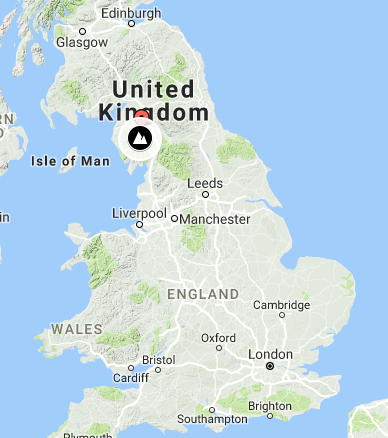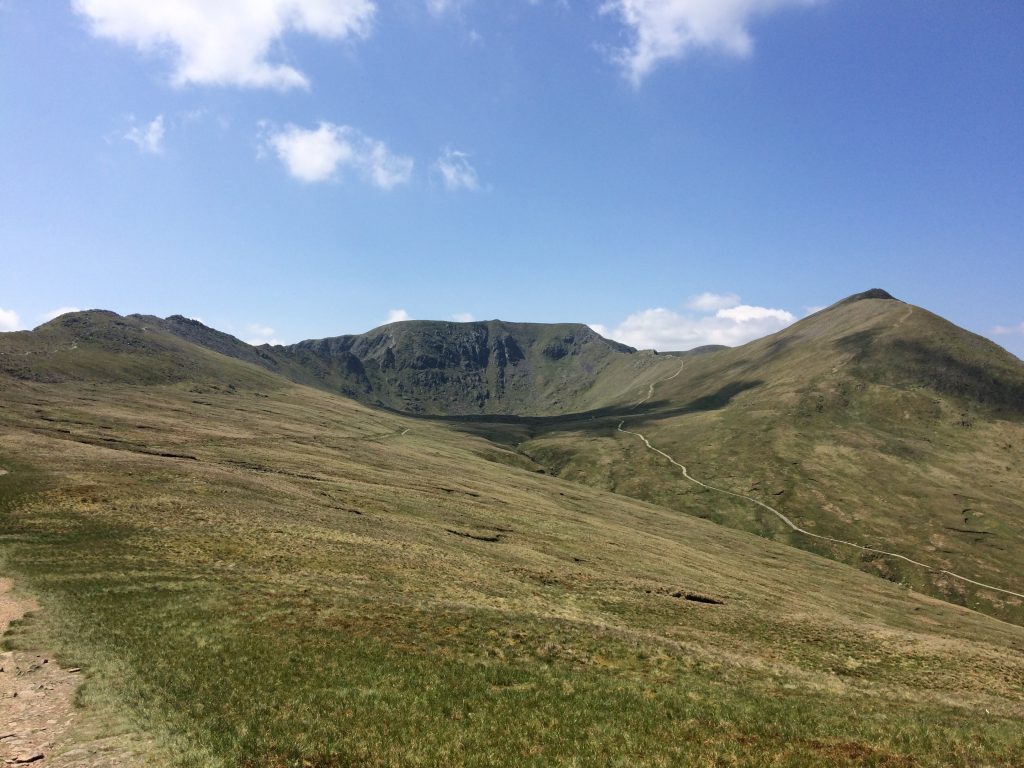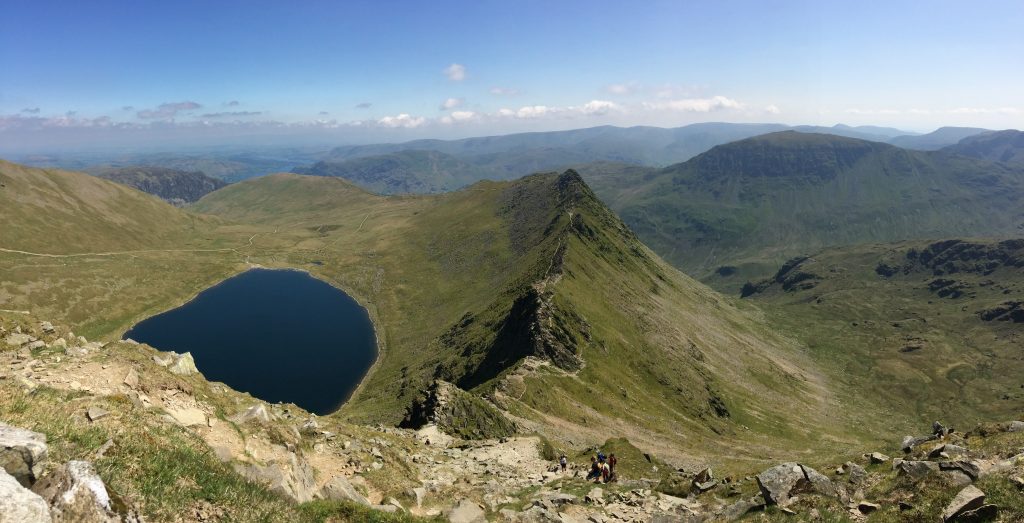During the last two weeks of May, Dr. Alley and were in the UK. Part of the experience involved complaining about the inadequate width of UK roads, but there was also some undeniably beautiful geology. One such location was Helvellyn, in the Lake District of England. This is one of the “top walks” in the UK, but note that the term “walk” has a very loose definition in British English. Really, this is a hike, with a climb of nearly 3000 ft in about 4 mi. If you’re a fan of glacially carved, open landscapes, it deserves the hype.

The exposed rocks of the Helvellyn Range are part of the Borrowdale Volcanic Group. The volcanics here transitioned from primarily intermediate lava flows (andesite) to more silica-rich magma that resulted in pyroclastic flows and ignimbrite deposits. This all occurred around 450 million years ago (Ordovician) — around the same time as the Taconic Orogeny in North America (most notably in New England).
That’s the raw material for the terrain, but the carving is much more recent. Glaciers from the last glacial advance have gouged out the sides of these mountains into deep u-shaped troughs with steep sides and wide bottoms. Below Helvellyn sits a deep bowl called a cirque. This is where a large mountain glacier once originated, digging out a hole from which it later advanced.
If you go up into the cirque today, that depression has been filled with a small lake called a tarn. Tarns sits at the headwaters of watersheds, and the outlets are often some of the cleaner water you can find (although they may be turbid from lots of sediment). This tarn, though, had a large number of sheep around it. So I’d be a little more suspicious.
Actually, the sheep are a more important aspect the the geology than you might think. Looking down from Helvellyn, you can see the “Striding Edge”. This is an arête, a sharp ridge that, thousands of years ago, was the boundary between two parallel glaciers. The glaciers would have been flowing away from you in the image below.
Finally, when walking along the northwest side of the mountain, you go by the Greenside Mine. In the 19th century, veins along a normal fault through the mountain were mined for the mineral galena (PbS), which also contains impurities of silver. 







So beautiful! I hope to visit that area someday. Thanks for the post!
That is a truly beautiful part of Britain, Alex! And Mark, how could you not have been through the Lake District with all your trips to the UK (not fossiliferous enough/too volcanic)?
However, the important question is, beyond the nice (and unexpected) glacial geology, and the inevitable questions about whether the Ag exists as exsolved Ag-S or Ag-Sb-S minerals in the galena, or as a coupled solid solution of Ag-and-Sb-for-Pb… did you visit Beatrix Potter’s cottage, just a short distance (well, by U.S. standards) away?
Hi Bill! I didn’t dig up much info about the geochemistry, although this PhD dissertation from 1962 likely gets even deeper: https://spiral.imperial.ac.uk:8443/handle/10044/1/8632.
And no, we did not go to Beatrix Potter’s cottage. I honestly had no idea who she was until people started asking why I didn’t go see the site… We did later that day go find Crawford Castle in Scotland, though. It was *very* important to find the rubble of rock that shares my name.
Old castles are a lot of fun, Alex, especially if they carry your family name, but seriously, all of you do a great job with this blog (and I wasn’t really expecting a reference for the mine’s mineralogy, but thank you!)!
It’s a lot of fun to read, and Mark should be proud of the careful work he has curated through those 1000+ posts! And you put in a huge amount of work, this spring, with all of your detailed entries, too!
Thanks, Bill! We very much appreciate your contributions to this blog community. I’m presently in the UK myself right now. More on that later!
Yes, thanks for the kind words, Bill! I’ve enjoyed the interactions in my brief time so far at Wooster.